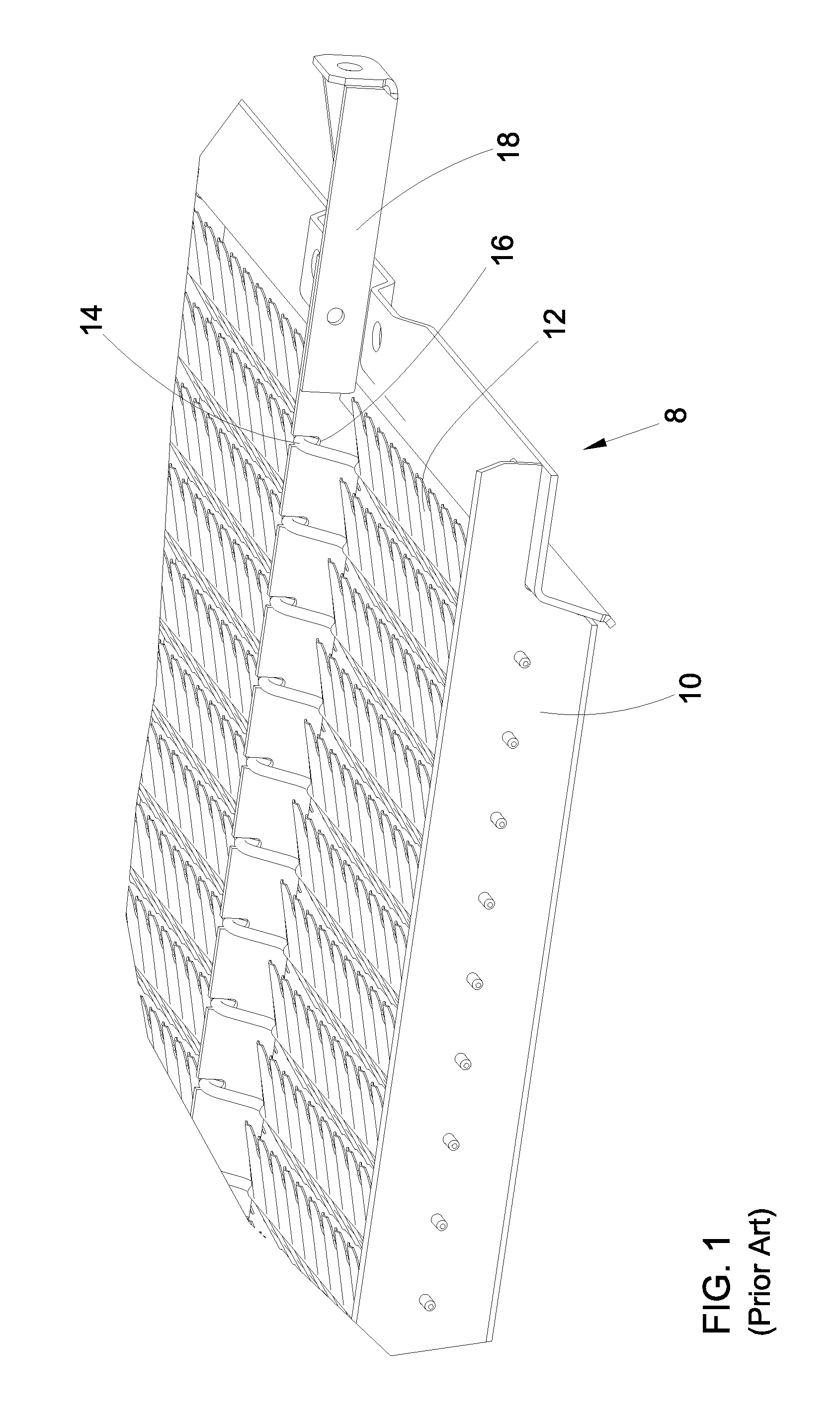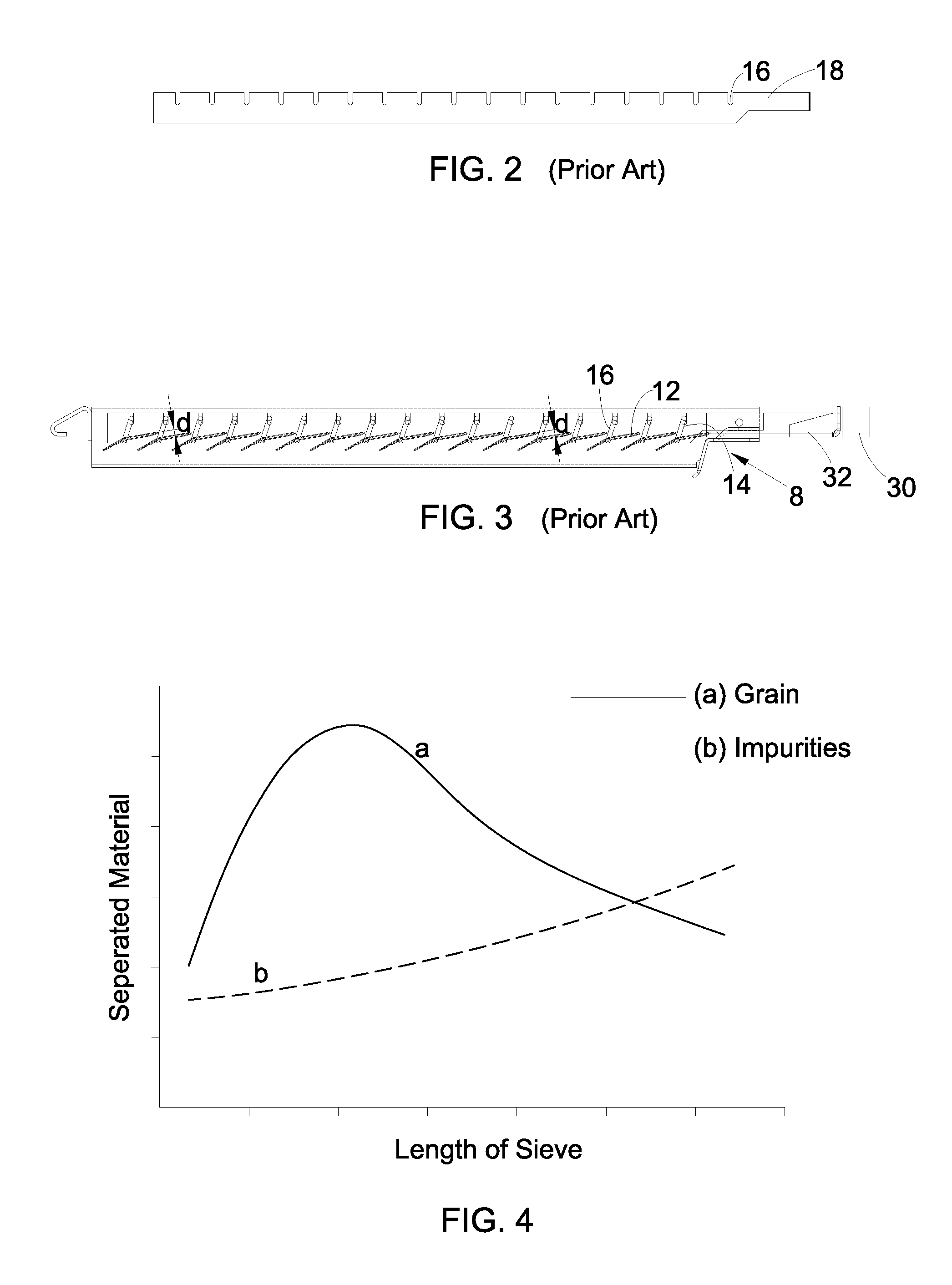Sieve for a combine harvester cleaning device
a technology for cleaning devices and combine harvesters, applied in the direction of solid separation, agriculture tools and machines, agriculture, etc., can solve the problems of large gaps, insufficient separation of grain then in the front area of the sieve, and complicated supply inventory maintenance and spare parts ordering, so as to avoid large undesired gaps
- Summary
- Abstract
- Description
- Claims
- Application Information
AI Technical Summary
Benefits of technology
Problems solved by technology
Method used
Image
Examples
first embodiment
[0037]In the upper sieve 166, as is shown in FIG. 7, the intervals a1 to a15 between adjacent slots 16, in the corresponding adjusting rod 18, shown in FIG. 6, are selected at least approximately the same when compared with each other, but larger than in the adjusting rod according to FIG. 2. By this positioning of the slots 16 in the adjusting rod 18, one makes it possible for the back areas 24 of the front plates 12 to be relatively steep and the plates 12 following toward the back to be set up somewhat flatter. The sieve opening d is thus not constant over the length of the sieve 166, as in the state of the art according to FIG. 2, but rather decline, successively, toward the back. In this way, the distribution of the mixture of grain and impurities over the length of the sieve 166 and the separation curve of FIG. 4 are taken into account; grain can pass downwards, without any problem, in the front area of the sieve 166; however, the impurities can pass only with difficulty in th...
second embodiment
[0038]In the second embodiment according to FIGS. 8-10, the adjusting rod 18 is provided with longer, vertical slot 16, wherein the slots 16 in the back area of the adjusting rod 18 are in a relatively precise vertical manner and tine slots 16 in the front area are slightly inclined forwards and upwards. A manually or externally operated positioning drive 26 is used for the vertical adjustment of the front end of the adjusting rod 18. The latter is coupled with the driving rod 32, on its back end, via a pivot pin 28, which can move in the forwards direction, in turn, by means of the adjusting drive 30.
[0039]The second embodiment makes it possible to bring the adjusting rod 18 into the first position, in accordance with the FIG. 9, in which it is brought downwards, as much as possible, and the crankshafts 14 interact with the slots 16 in the vicinity of the upper ends of the slots 16. Since the intervals a1 to a15 of the slots 16 are identical there with the intervals a1 to a15 of th...
PUM
 Login to View More
Login to View More Abstract
Description
Claims
Application Information
 Login to View More
Login to View More - R&D
- Intellectual Property
- Life Sciences
- Materials
- Tech Scout
- Unparalleled Data Quality
- Higher Quality Content
- 60% Fewer Hallucinations
Browse by: Latest US Patents, China's latest patents, Technical Efficacy Thesaurus, Application Domain, Technology Topic, Popular Technical Reports.
© 2025 PatSnap. All rights reserved.Legal|Privacy policy|Modern Slavery Act Transparency Statement|Sitemap|About US| Contact US: help@patsnap.com



